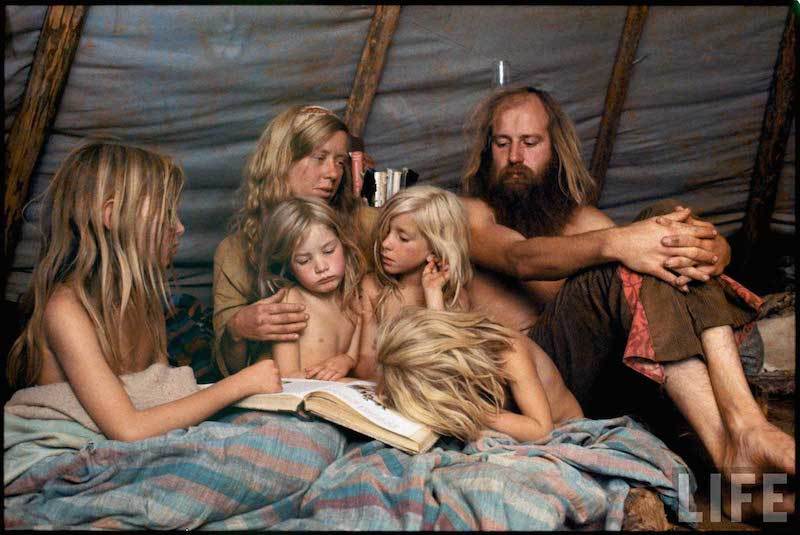image: http://all-that-is-interesting.com/wordpress/wp-content/uploads/2014/11/hippie-commune-bedtime-stories.jpg

This iconic photograph shows The Bray Family reading bedtime stories at the Mystic Arts commune reading bedtime stories in Sunny Valley, Oregon, in 1969. Photography by John Olson Source: View Liner ltd
Throughout the late 1960s and 1970s, a deep-seated social discontent developed among young people in the United States. These were men who’d been forced to fight a war they didn’t believe in only to return home to a country that didn’t want them. The country was filled with college graduates lacking any job prospects, young women who refused to lead their mothers’ lives, and the myth of an “equal” society that couldn’t seem to shake its nasty history of segregation and inequality.
The product of this dissatisfaction was hippie culture, and from hippie culture sprang hippie communes–group living spaces, communities, or villages where like minded individuals could live simply like their agrarian ancestors (usually with the help of some mind altering substances). And, most notably, hippies placed communal needs and values above individual rights. As University of Kansas professor Timothy Miller said, “Reason had run its course; now it was time to return to the mystical and intuitional…the hippies rejected the industrial for the agrarian, the plastic for the natural, the synthetic for the organic.”
Each hippie commune was different: some were deeply religious communities while others were completely secular. Drug use was rampant on some hippie communes and forbidden on others. Some were strictly self-sufficient agrarian societies, but other hippie communes participated in capitalism–owning businesses and selling rock albums. There was no “one-size fits all” model, and each hippie commune developed its own culture, rules, and personality over time.
By the 1980s, the original fascination surrounding hippie communes had largely faded, and they began dropping off the map. While a few continue to limp along today, all that remains from a majority is photographic evidence of the time in American history when time when hippie communes thriving. If you want to delve deeper into commune life, check out these videos about hippies, the communes they lived on, and the children they raised there:
Thanks to the Isis Aquarian Archives, Messy Nessy Chic, and Steven War Ran for the photographs above.
If you liked these photos of hippie communes, be sure to check out ATI’s exclusive interview with Isis Aquarian of The Source Family and our other galleries on unforgettable Woodstock photos and a history of Hippies. And before you go, like All That Is Interesting on F
Read more at http://all-that-is-interesting.com/hippie-communes#fClGLLy6O7i6RD2o.99

